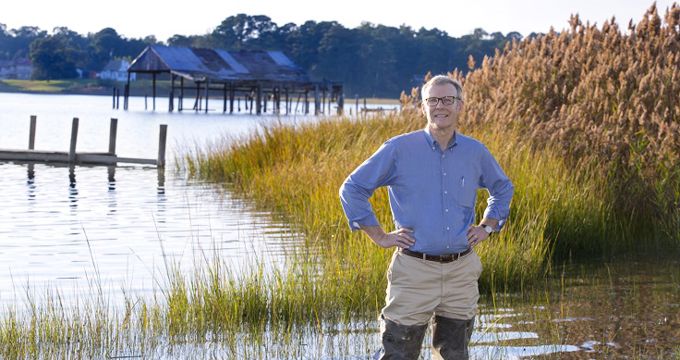
Virginia Dam Safety Act – Webinar Recap
What We Covered in Our Webinar
In our latest webinar, Jim Lang with the Waterfront Law Team discusses causes of dam failure, federal and Virginia law, liability after a dam failure, unsafe dams, right of entry, temporary stop work orders, as well as enforcement, criminal penalties and civil penalties.
Watch Our Webinar
You can download the slides from this webinar here.
Main Causes of Dam Failure
While there are many reasons dams fail, we have outlined a few of the most common reasons during our webinar, these include:
- Over topping (water spilling over the top)
- Foundation defects
- Cracking (often caused by natural settling)
- Inadequate maintenance
Specific examples of dam failures include:
- Dam Failure in Johnstown, PA – In 1889, 2,200 people were killed in the dam failure of Johnstown, PA. Huge trees were snapped off or uprooted one after another and went plunging off in the torrent. The water advanced like a tremendous wall. Giant chunks of the dam, fence posts, logs, boulders, whole trees, and the wreckage of [a home] were swept before it, driven along like an ugly grinder that kept building higher and higher.”
- Francis Dam Failure, Los Angeles County – In 1928, 385 people were killed in the deadliest and worst civil engineering failure of the 20th century. The dam, designed by William Mulholland, stood 207 feet tall. During the failure, waves of water traveled 54 miles to the Pacific Ocean, destroying and damaging 1,000 houses as well as thousands of acres of land, bridges, roads, farms and orchards.
- Dam Failure of Teton, Idaho – In 1976, 11 people were killed as the Teton dam was filling for the first time. Designed by the Bureau of Reclamation, the 305 foot tall dam was designed to help with flood control, hydropower, irrigation and drinking water as pulled from the Teton River. The resulting damage from the dam failure totaled $400 million and flooded five counties, 300 square miles and traveled 155 miles downstream.
Legal Response to Dam Failures
As a response to dam failures, there are several laws in existence:
- Common law
- Federal Dam Inspection Program (33 USC §§ 467 to 467o)
- FEMA
- Regulations (7 CFR § 1724.55)
- Virginia Dam Safety Act (Va. Code Va. Code §§ 10.1-604 to 613.6)
- Virginia Soil and Water Conservation Board (“Board”)
- Department of Conservation and Recreation (“Director”)
- Regulations (4 VAC 50-20-10 to 4 VAC 50-20-400)
Unsafe Dams
Imminent Danger, Va. Code §10.1-608, states if the owner does not take appropriate and timely action the Governor has authority to take immediate appropriate action without a hearing and the Attorney General can sue owner to recover expenses for action taken by the Governor. Another option is to secure a lien and ensure the owner’s obligation to pay.
Nonimminent Danger, Va. Code §10.1-609, dictates the Virginia Soil and Water Conservation Board (VSWCB) issues report to owner after safety inspection. Next, the owner shall implement recommendations in the report. If the owner refuses, the Director can issue an administrative order to the owner. The owner can contest the order at hearing before the VSWCB or appeal VSWCB’S decision to Circuit Court. If the owner defies the order and does not contest the order at VSWCB, there may be civil and/or criminal penalties.
Further, there is the Right of Entry (Va. Code §10.1-610) which allows VSWCB’s regulators to enter, inspect and perform tests on existing dams. The agency will examine during reasonable times and circumstances and will seek consent. If consent is withheld, a warrant will need to be secured. An affidavit may be necessary if there is probable cause to believe there is a dam on the property “which is not known to be safe.”
Ultimately, a Temporary Stop Work Orders, Va. Code §10.1-612.1, might be necessary. The Director of DCR may issue the order under the following grounds - construction or alteration without necessary approvals or construction or alteration not in accordance with approvals. The orders will have the time and date of hearing before VSWCB to show cause why the order should be vacated (within 15 days). The owner can appeal the results of the show cause at a hearing in the appropriate Circuit Court. If the owner defies the order, the court may impose an injunction, civil or criminal penalties.
Enforcement & Penalties
Enforcement, Va. Code §10.1-613, allows the VSWCB to sue any person who fails or refuses to comply with an order. Remedies may include an injunction to halt unlawful construction, modification, operation, maintenance; the owner pays the VSWCB’s expenses, secured by a lien on the owner’s land.
Criminal Penalties, Va. Code §10.1-613.1, include a Class 3 misdemeanor (no jail time, $500 fine maximum, per day following service of the notice of violation and/or $25,000 total maximum); operate, construct or alter a dam without approval; violate an order and obstruct the VSWCB, its agents or employees.
Civil Penalties, Va. Code §10.1-613.2, include $500 per day NTE maximum of $25,000; VSWCB sends written penalty notice to the owner; the owner can contest at hearing before VSWCB and the owner can appeal VSWCB decision to Circuit Court.
Additional Resources
- DCR website: https://www.dcr.virginia.gov/dam-safety-and-floodplains/dam-safety-index
- Virginia Law and Regulation Regarding Dam Safety: https://www.waterfrontpropertylaw.com/blog/posts/virginia-law-and-regulation-regarding-dam-safety/
- Virginia Law on a Dam Owner’s Liability After a Dam Failure: https://www.waterfrontpropertylaw.com/blog/posts/virginia-law-on-a-dam-owner-s-liability-after-a-dam-failure/
